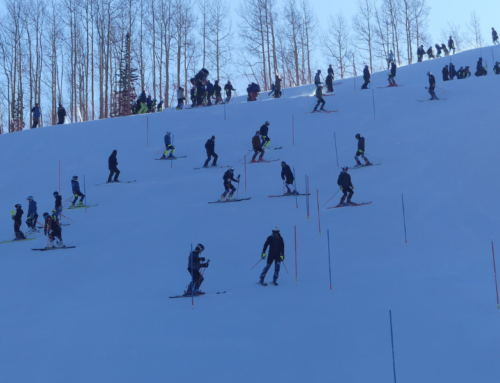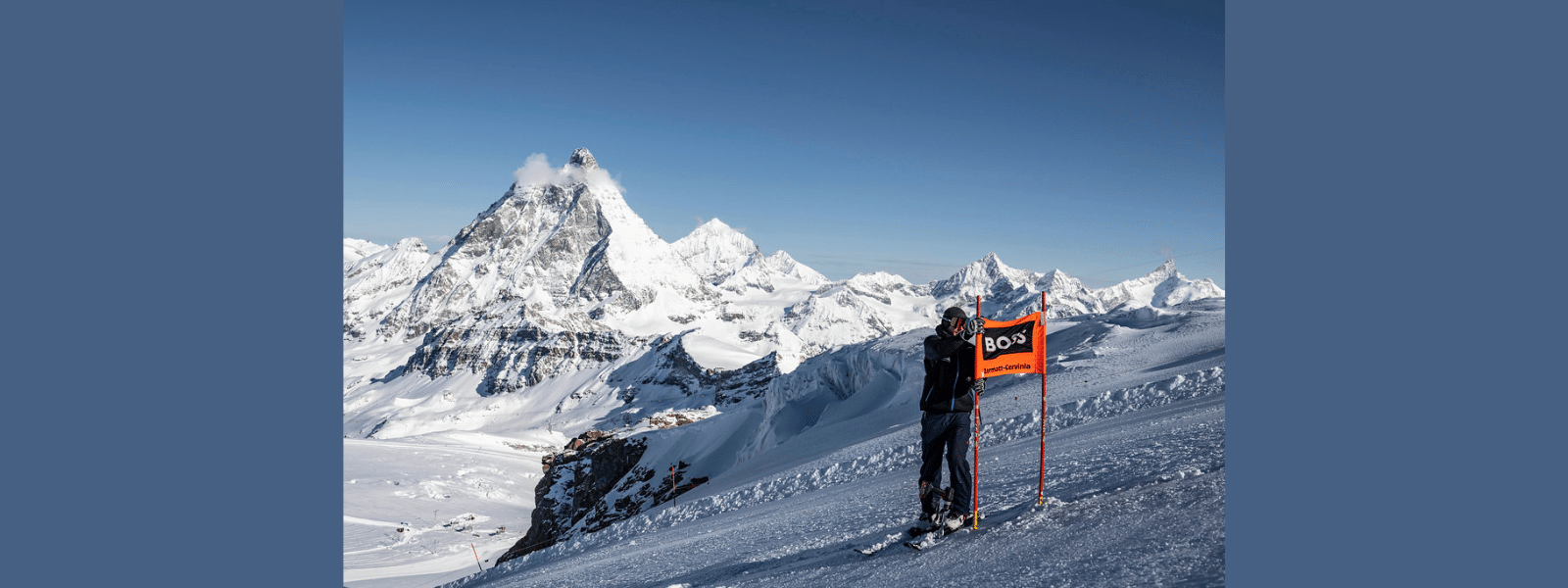USST coach Phil McNichol talks about the components of modern slalom
USST coach Phil McNichol talks about the components of modern slalom Slalom has changed dramatically in the past four years. Not since the introduction of hinged gates in the early 1980s have skiers adjusted their techniques so much. This time around, it’s mainly because of the changes in equipment: men on the U.S. Ski Team are currently testing and training on relatively short slalom skis (between 155 and 165 centimeters versus 200 cm in the past) with varying depths of sidecut.
Slalom has changed dramatically in the past four years. Not since the introduction of hinged gates in the early 1980s have skiers adjusted their techniques so much. This time around, it’s mainly because of the changes in equipment: men on the U.S. Ski Team are currently testing and training on relatively short slalom skis (between 155 and 165 centimeters versus 200 cm in the past) with varying depths of sidecut.
Construction parameters also vary, but, in general, today’s skis have a smoother flex pattern from tip to tail that is softer and more symmetrical than “old school” slalom skis. And skiers now modify their equipment to achieve greater edge angles. These changes, in turn, have prompted alterations to slalom tactics, techniques and coaching methodology.
There are six basic alterations that are helping today’s slalom racers to carve rounder lines and achieve faster times than ever before: wider stance; greater inclination; improved centering on the skis; less steering and more arcing; improved ski-snow contact; and a longer path by applying a rounder turn shape with the outside ski. Understanding these concepts can help you incorporate the latest slalom techniques into your racing program.
1. Wider stance
A wider stance:
a. Enables a skier to build pressure more efficiently throughout a turn and decrease it more easily through the transition.
b. Improves a skier’s side-to-side base of support and compensates for decreased tip-to-tail support.
c. Allows a skier to increase the incline of the lower limbs, which creates the greater edge angle required to carve tight slalom arcs. (See Erik Schlopy in the photomontage.)
Coaching point:
— When practicing gates, have skiers focus on gaining space for the outside ski at gate contact by keeping their skis at a constant width and beginning their turn at the rise line of the gate. (A common error skiers make is to close their stance at gate contact, bringing the outside foot in tight to the gate. This usually creates late pressure, which makes the skier turn across the hill more than necessary and is associated with premature turn initiation.)
2. Greater inclination
New slalom skis hold an edge better and arc more than the previous generation of skis, and as a result, athletes can increase their inclination (i.e., move their bodies farther into the inside of a turn). This allows the skier’s center of mass to take a straighter line through the gates.
Coaching point:
— Practice extended free skiing work, edging drills and carved slalom-radius turns. I have athletes practice edging through ‘Railroad Turns.’ Take skiers to flat terrain and have them execute shallow turns, leaving linked, clean tracks in the snow. Progress to steeper terrain and tell them to execute complete turns with linked tracks, but allow them to increase their speed. To accomplish this task they will need to incorporate a good deal of inclination. Once skiers have success with this drill, you can place more attention on and refine their inclination.
3. Improved centering on the skis (using less fore/aft movement)
Using today’s short slalom skis, a skier can no longer use excessive movement to make a quick, short direction change. It’s not necessary with a rounder carving line, and the short skis won’t support it. If a skier attempts this on today’s slalom skis, chances are he or she will fall over backwards.
Coaching point:
— Maintaining ankle flexion and controlling the movement of the upper body and arms is vital for proper balance. I’ve also taught the use of a double pole plant to help control fore/aft movement and quiet the upper body.
4. Less steering and more arcing
The common practice in the early 1990s, on 200 to 205 cm slalom skis, was to steer or pivot the skis through the top third of the turn and then apply a quick and forceful edge set to complete the turn. Today you see much less steering into the turn as top-level skiers roll their skis up onto edge and bend the skis into and through a rounder fuller arc.
5. Improved ski-snow contact
It was also typical in the mid-’90s for slalom skiers to lift the inside ski while redirecting the skis into the fall line. This dramatic loss of ski-snow contact was associated with a tighter stance and aggressive fore-aft movement. Today it’s more common to see skiers keeping both skis on the snow and carving smaller radius turns: contact is desirable because loss of contact tends to delay turn initiation and promote excess redirection. It also maintains momentum and allows for more flowing and linked movement patterns.
Coaching point:
Help skiers learn to apply center of mass correctly throughout the turn by using this mini progression:
a. Perform outside-ski turns where at the completion of each turn, skiers shift their weight to the inside — or uphill — ski, standing tall and moving forward. They should lift the old outside ski and roll the new ski into the turn. Once the turn is established, they can place the inside ski down on the snow at the turn apex.
b. Perform turns initiated on the inside ski with the outside off the snow until turn apex.
c. Perform linked carved turns (both skis firmly planted on the snow) focusing on the movements established in the earlier drills.
6. Applying a rounder turn shape with the outside ski
As discussed in the previous issue of Ski Racing, proper turn shape takes many hours of practice in the gates training situations and drills. At the national team level we look for arc and shape coming into and exiting the turn with the majority of the pressure and bend coming to the ski in the fall line.
Remember, immersion in solid technical skills will bring positive results only if the athlete is able to negotiate gates and terrain with fluidity and rhythm of movement. A large portion of this flow and rhythm results when skiers learn to project and move their center of mass forward and down the hill throughout the turn. Because slalom, like all skiing, is a progression, skiers can master this concept only after they’ve mastered all skills prior to this point. The next step is to orchestrate movement control, timing, and anticipation in a perfect blend of skills. Technology is always changing and the best in the world will continue to adapt and evolve to capitalize on these innovations. It is our job to stay grounded in the basics while constantly learning and adapting our methodology to keep pace with the future.
Editor’s note: Phil McNichol is the men’s head coach of the U.S. Ski Team.





















